The couch is a common place where bugs live and lay eggs. Leftover food as well as the constant presence of humans makes the couch a good place for bugs.
Food stains and drink spills also attract different types of bugs to the couch. Biting bugs on the couch are interested in a blood meal that humans or pets can provide.
A dirty old couch is more likely to attract bugs. You should worry about the cleanliness of the couch regardless of the bugs you see on it. However, not all bugs are the same and some are more dangerous than others.
Table of Contents
Bugs That Can Hide on Your Couch
The following species of bugs are among the most common on the couch. Some of them might even and taking quick action against them is mandatory.
1. Bed Bugs
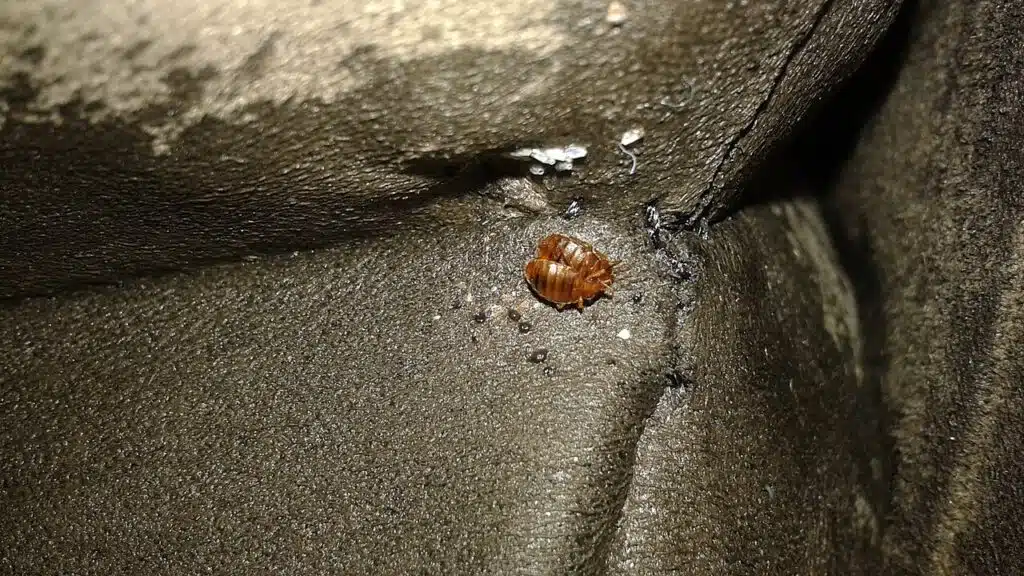
Bed bugs are among the most dangerous bugs you can find on your couch as these bugs are seen even on new clean couches in clean homes.
Bed bugs are carried inside the house by a host such as pets or by luggage or carried on clothes. These bugs are not necessarily seen in dirty homes and on dirty couches as they are seen even on clean houses.
These bugs tend to love couches as they provide plenty of good hiding spots. Unlike other bugs such as cockroaches, bed bugs don’t have a nest as they prefer a more common hiding area which can be any secluded part of the mattress.
They only come out for food and these bugs use humans for a blood meal. Their bites can be dangerous and lead to certain skin conditions.
Bed bugs often go unnoticed as they tend to come out at night when you fall asleep on the couch. They might also come out when you relax on the couch watching TV.
These types of bugs normally leave blood stains which are when most people notice them.
Cleaning the couch, your clothes, the room, and the house thoroughly is recommended once you confirm bed bugs indoors.
2. Carpet Beetles
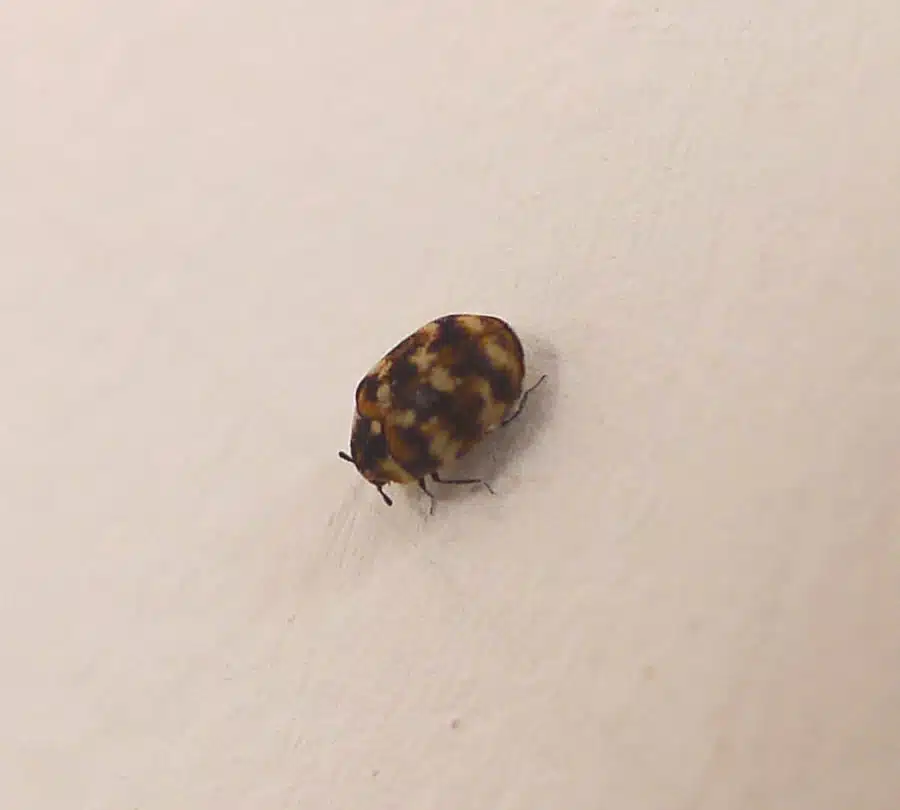
Carpet beetles are some of the most common bugs on couches and inside the house. These small bugs don’t bite and are generally seen as a lesser threat to humans than bed bugs.
Still, carpet beetles can damage almost all natural fibers in the house, including those on the couch.
These small bugs enter homes by different means. Most fly indoors taking advantage of open doors or open windows. Carpet beetles can fly and they’re attracted to various types of lights they see indoors.
Even a small light can attract these bugs indoors, mainly looking for food.
Often measuring just 1mm, carpet beetles install themselves on a rug or a piece of furniture such as a couch if it’s made from natural fibers such as cotton or wool for food.
They start eating their way through these fibers until they deteriorate them completely.
Carpet beetles may be eliminated without the help of a pest control professional by thoroughly vacuuming the entire couch as well as the entire house and checking for visible signs of damage on all fibers around the home, including clothes.
3. Ants
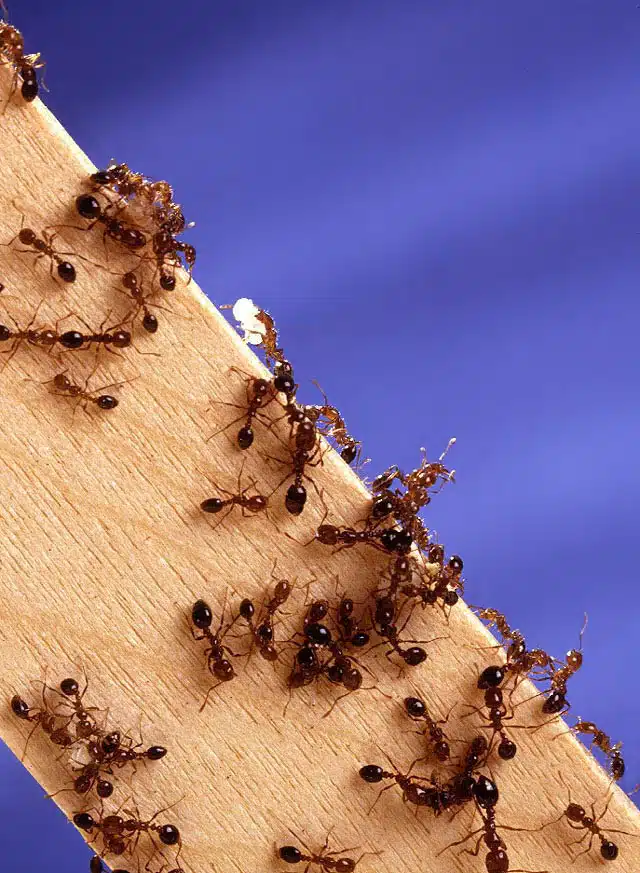
Various types of ants are attracted to the couch. Unlike carpet beetles, ants have very good reasons to be on the couch and all of them are tied to food.
Spilling a sugary drink on the couch and not cleaning it afterward is an invitation for an invasion of ants. Leftover food and foods your pet leaves on the couch may also attract ants.
Not all types of food attract ants. Fruits, fruit seeds, rotting fruits, and dry fruits are among the sweet foods ants love the most.
Home cleanliness is also important when it comes to keeping ants away. Foods left out in the open anywhere else in the house may also attract ants that then move onto the couch.
Ants are a sign of a possible dirty couch or a dirty home. Good cleaning habits and sealing all entry points are recommended to keep these small insects away.
Some ants can fly and they make it indoors through open windows or open doors. Other ants crawl inside through small homes or gaps in walls, around windows, or doors.
Ants are attracted to foods outside of the house as well. Rotting food around the house or an open trash can may attract ants that then move easily indoors for more food.
Killing ants in the house also involves killing the ants outside as many form colonies and nests outside of the house.
4. Fleas
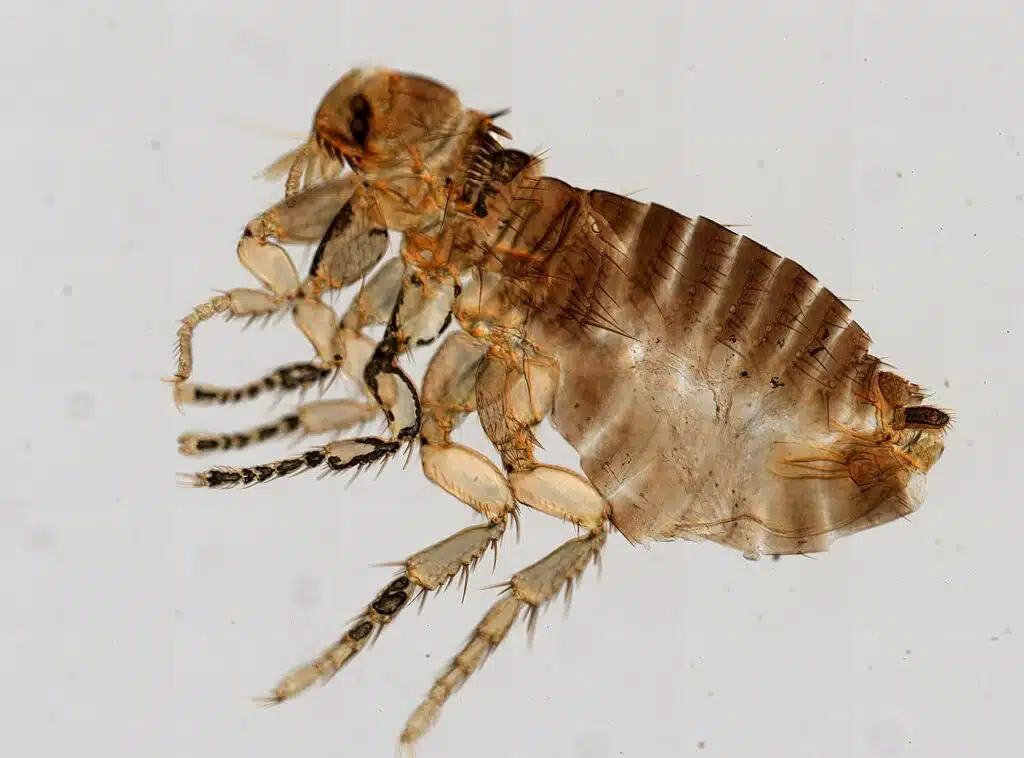
Fleas need more blood than any other food. They bite people and pets alike, mainly for blood.
Some fleas also eat feces or decaying organic material but blood remains the primary food source. This is why you should take immediate action when seeing fleas on your couch.
Tiny but agile, fleas can jump a long distance and this helps quick identification.
Seeing one or multiple fleas on the couch is a clear indication your home needs proper cleaning. Fleas attach themselves to humans, pets, clothes, or camping gear, mainly from vegetation or from other animals.
This is how they get indoors as fleas cannot fly through windows as carpet beetles.
Getting rid of fleas involves inspecting all of the bites on your body, washing up, and treating any skin conditions inflicted by their bites.
Fleas might also live further on your pets, mainly as hosts. If you see fleas on the couch it’s also a good time to inspect cats and dogs around the house for fleas.
Vacuuming and cleaning the couch and the entire house is mandatory. Fleas eventually die if they cannot find a suitable host for blood. But they might continue living on pets or biting home residents so they need to be killed.
5. Dust Mites
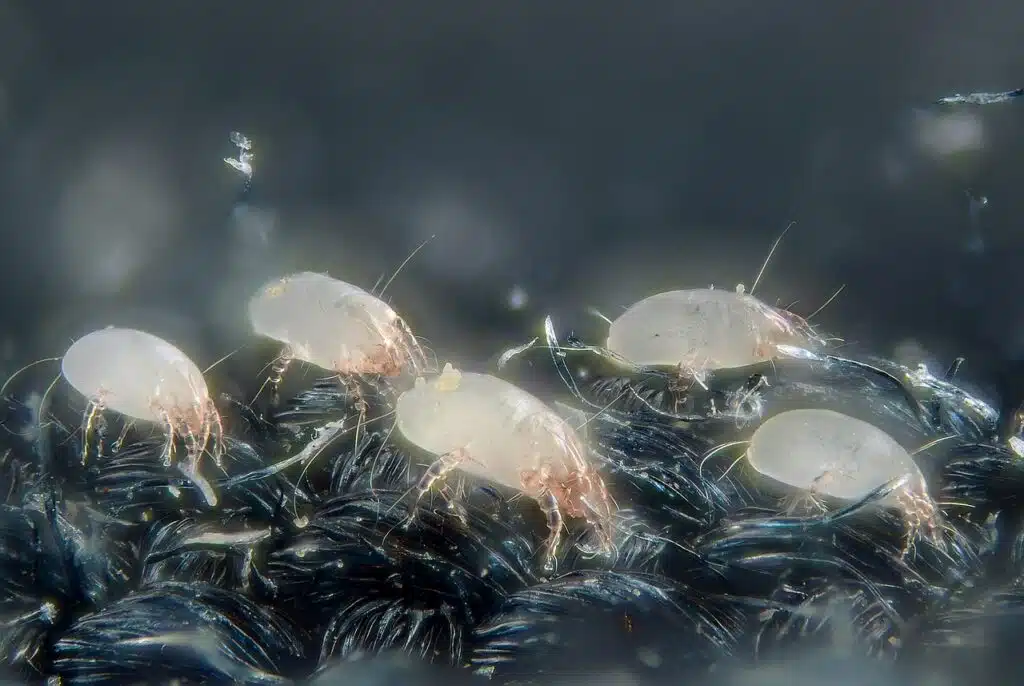
Dust mites don’t bite but they can be found on the couch. The way you can identify these microscopic bugs is by assessing possible skin allergies whenever you sit on the couch.
This is a sign of a possible dust mites problem.
Dust mites need very specific conditions to thrive so you can further assess the conditions in your home to see if they meet the requirements of dust mites.
High humidity is one of the most important conditions for dust mites to live. Warmth is also important.
This is why dust mites are known for rapid multiplication over long rainy periods.
Dust mites are highly problematic compared to other larger bugs on the couch as you cannot see them. This is why these tiny bugs are difficult to identify on the couch.
You can check secondary reactions to skin allergies for possible dust mites in your home. Apart from red patches of skin, you might also experience excessive sneezing, coughing, or an itchy throat.
These are normal reactions to dust mites.
Reducing indoor humidity is the first step toward eliminating dust mites. Cleaning all surfaces of the home is required to eliminate these microscopic bugs as well.
6. Clover Mites
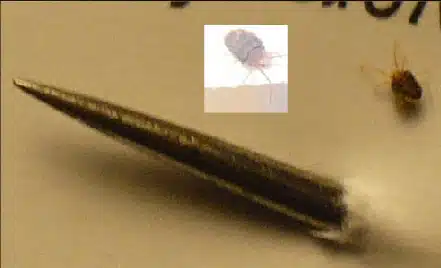
Clover mites are tiny red-brown bugs that grow to a size of up to 0.85mm. These small bugs don’t bite and they don’t carry diseases.
They can still enter homes and be seen as a messy problem when found on the couch. Clover mites are seen across North America and eliminating them is a 2-step process that involves cleaning the house and the outdoor area around the house.
Clover mites thrive in vegetation found around the house. This is the main reason these bugs are mostly found indoors in a home surrounded by flowers, shrubs, and other plants.
Trimming these plants and even eliminating them might be a good idea when it comes to keeping clover mites out of the house.
Using a vacuum cleaner is best for indoor elimination since these bugs might leave stains on your carpets. A red mark remains behind a crushed clover mite.
7. Chiggers
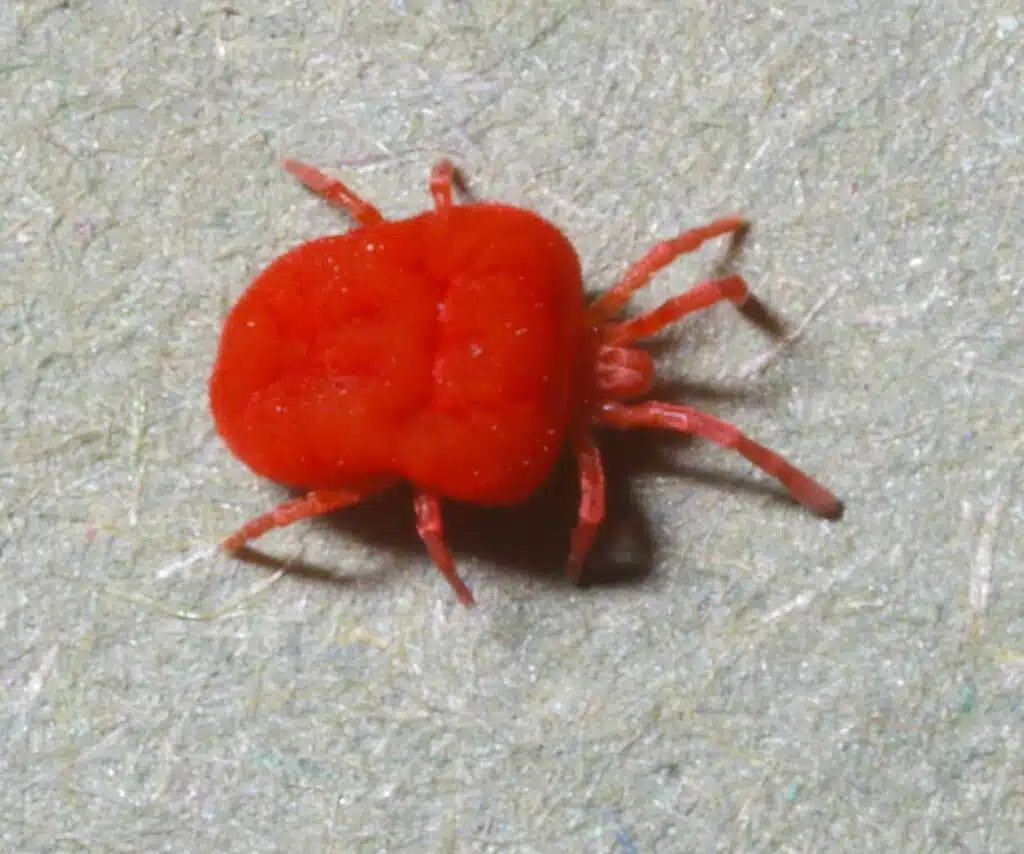
Chiggers are tiny red bugs that you attach themselves to your clothes or skin when you pass through thick vegetation.
You may accidentally introduce chiggers to your home whenever you come back from camping or fishing trips. Even a day in the park can result in the accidental introduction of chiggers inside of your home.
These bugs can bite and their bites lead to itching of a severe level. Red skin, swollen skin, but especially an intense itching sensation best describe the symptoms of chigger bites.
Chiggers can be killed with the tools you have at home without the help of a professional.
All clothes and blankets or pillows that have been sitting on the couch need to be washed, preferably at a high temperature.
You may also need to treat chigger bites if you suffer from itchy skin. Using various ointments is considered a good solution to reduce the itching sensation of the skin.
8. Crickets
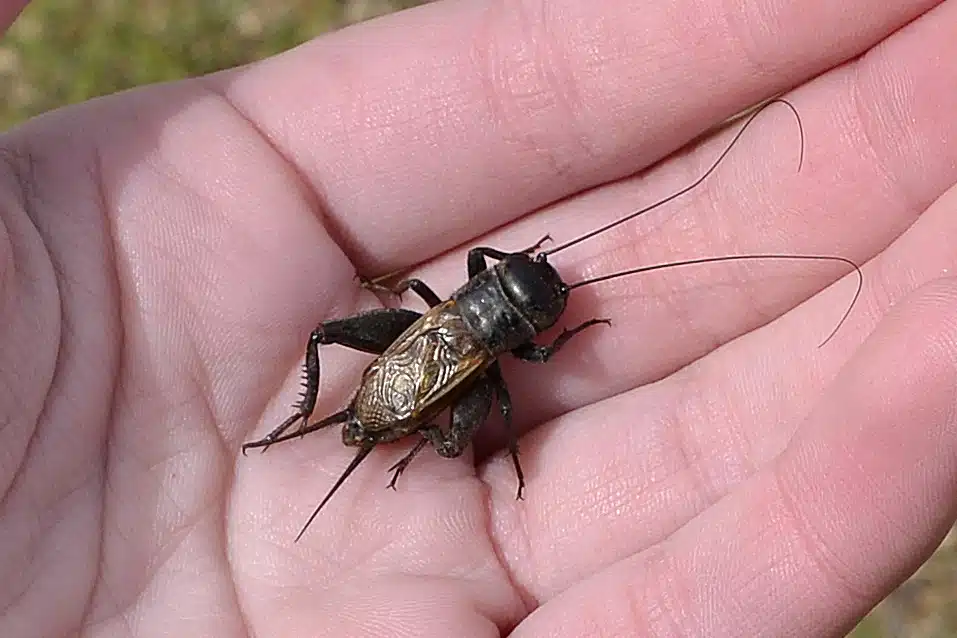
House crickets are some of the most common bugs on the couch. These tan or brown-black bugs are found all around the backyard and they can enter homes easily.
Crickets can fly and they can also jump long distances. Attracted to lights, they make their way indoors.
Crickets might seem inoffensive to your couch at first, but these bugs can chew their way through the leather. This means crickets might make their way to leather couches on purpose rather than by accident.
Keeping crickets out of the house involves mowing the lawn and clearing the garden of vegetation regularly.
These bugs are also sometimes carried indoors by accident with blankets and tents. It’s best to clean picnic and camping gear before bringing it back indoors.
9. Lice
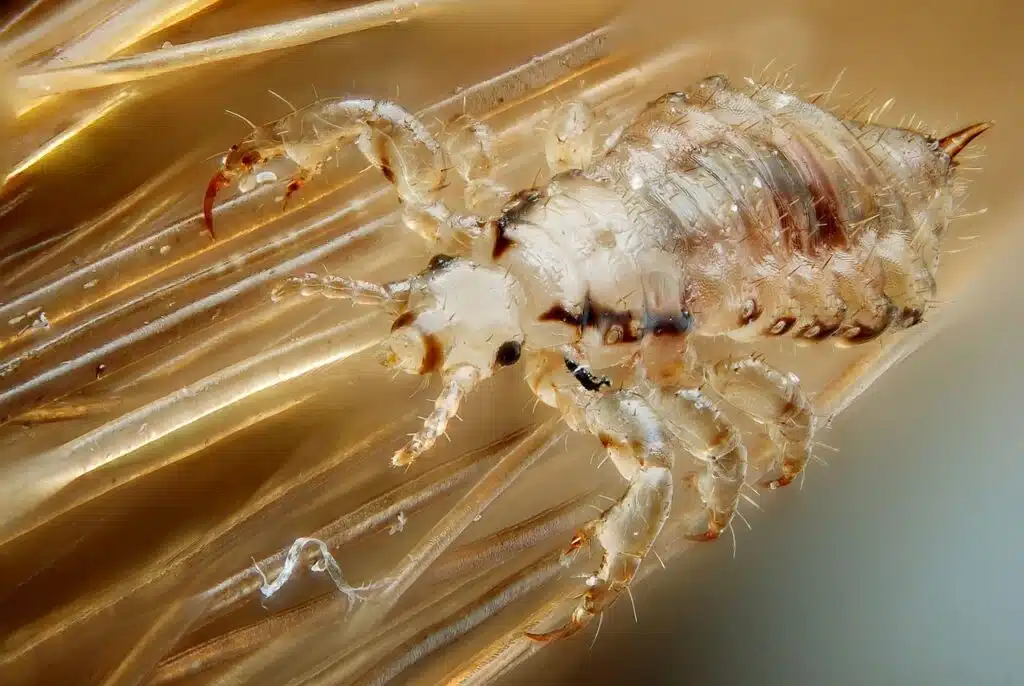
Lice are some of the most problematic bugs you can find on your couch. Unfortunately, chances are lice are already on your or a family member whenever you find them on a couch since they attach to a host and hair follicles.
There are various types of head lice according to the area of the body they live on. Head lice are types of lice that live and breed in human hair.
These lice grow to a size of up to 0.3mm. Males are brighter than females but they can multiply rapidly as females lay eggs attached to hairs.
Seeing lice on the couch means someone in the house is probably carrying lice. Getting the right treatment is recommended when it comes to getting rid of lice.
Some good practices involve washing your hair with a special anti-lice shampoo.
Staying clear of people with lice is also recommended as the direct transmission is the easiest way of getting lice.
10. Ticks
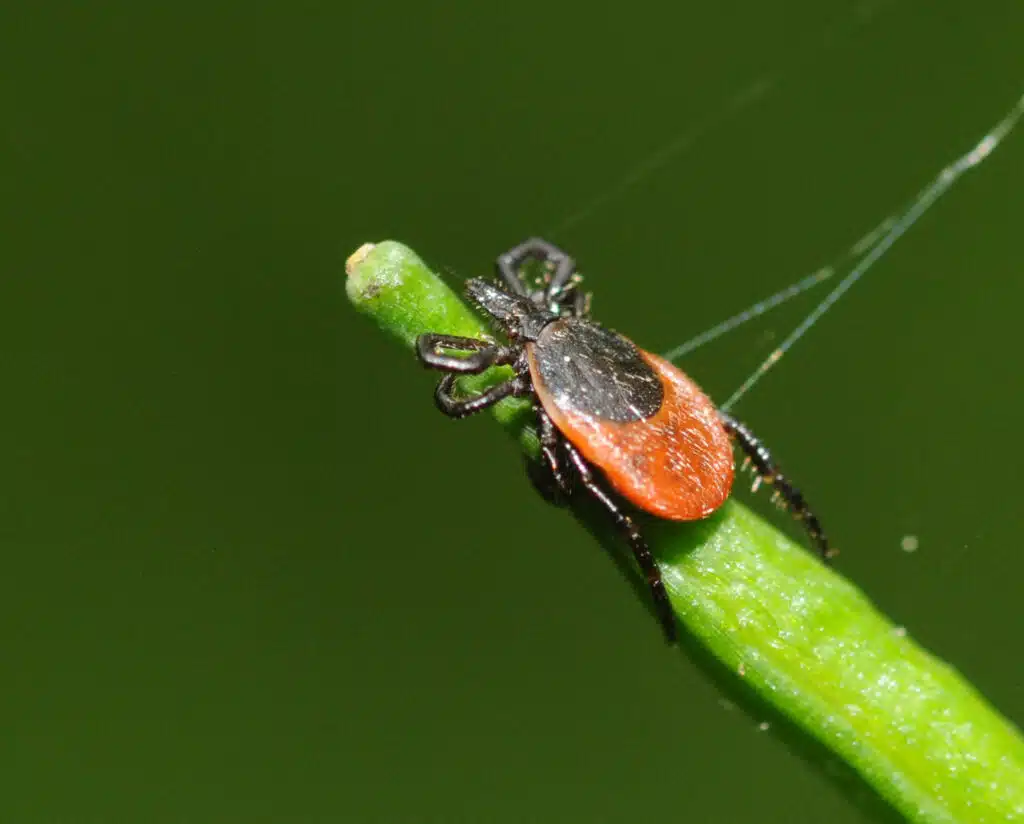
Lice have the average size of a sesame seed while ticks are about the size of apple seeds. Ticks are just as dangerous as lice and even more dangerous when they transmit diseases.
Ticks bite by attaching themselves to the skin. You need to manually remove the attached ticks to your skin whenever you’ve been bitten.
Cases of ticks wandering inside of the house and even making it to the couch on their own are rare. These bugs attach themselves to you whenever you walk through dense vegetation.
They use people and pets as hosts and can make it onto the couch and into the house with the host.
Getting rid of ticks might require medical treatment if you’ve been bitten.
You can use a vacuum cleaner to remove ticks from your couch if you notice a bug around the couch.
11. Spiders
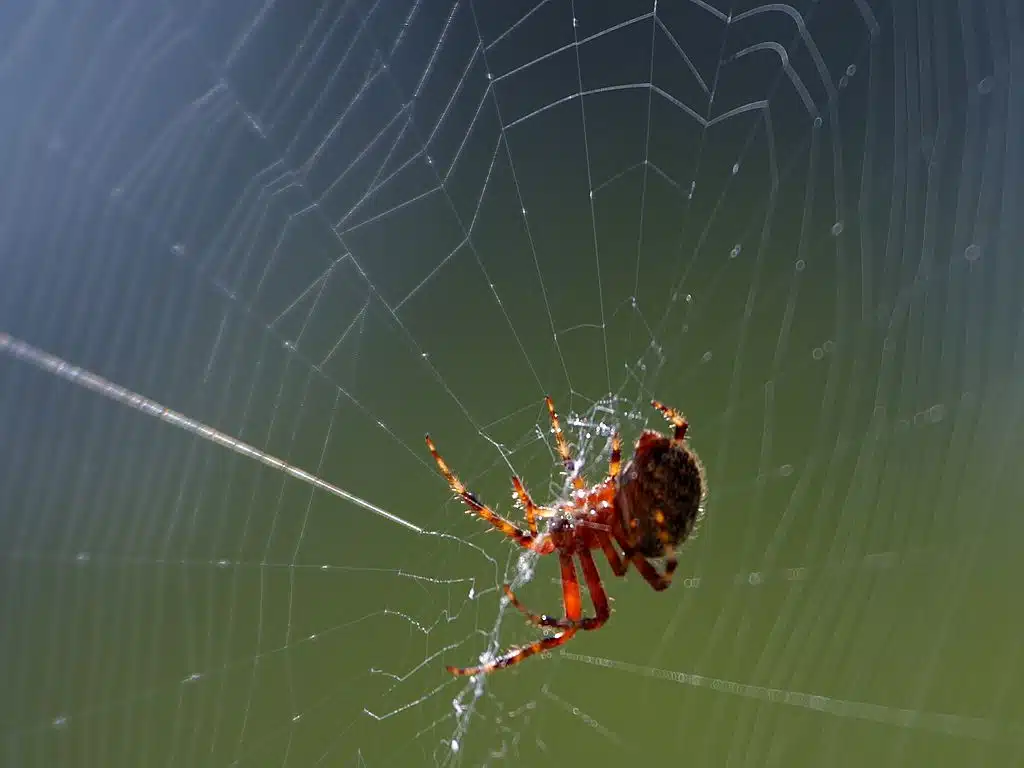
There are numerous types of spiders that you can find on the couch. Many spiders live behind the couch or under the couch as they tend to lay egg sacs attached to furniture.
Some spiders you find indoors bite while others don’t. While severe spider bites are rare, they can still occur even without leaving the house.
Spiders get in the house seeking food or shelter. Many people believe spiders are secluded in dark corners where they build spider webs.
Certain species of spiders don’t build any webs at all. Furthermore, spiders can be predatory moving around the house to find insects instead of building spider webs as traps.
You can eliminate spiders by cleaning your home and the area of the couch regularly. A weekly cleaning routine is often recommended against other insects and pests that may attract spiders to your home as well.
12. Bat Bugs
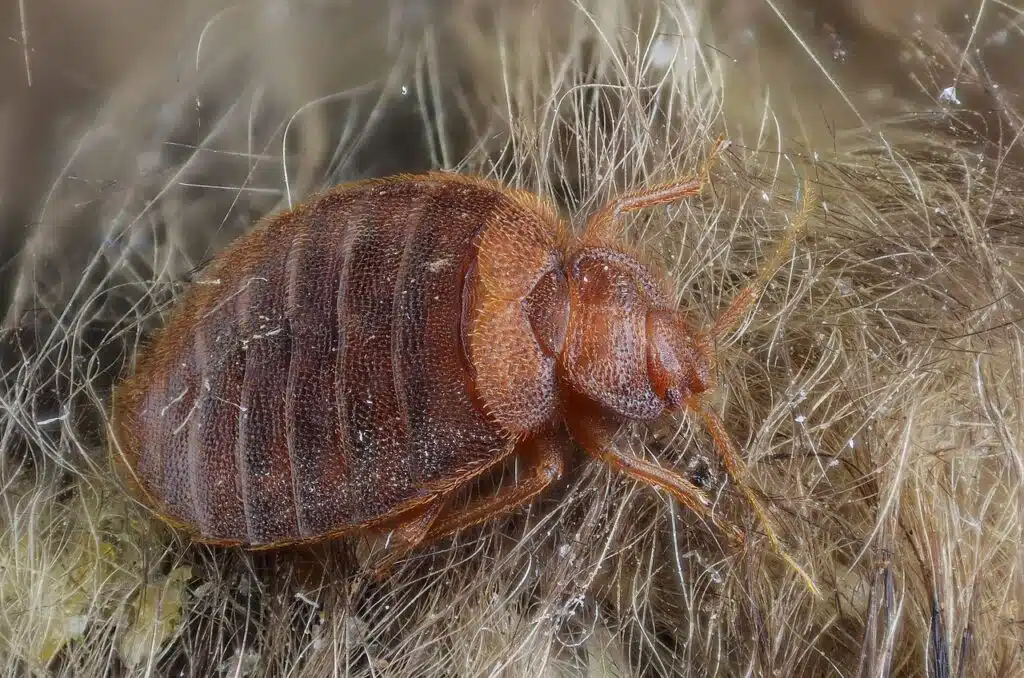
Bat bugs come indoors with bats. These are parasitic bugs that feed on mammal blood.
As their name implies, bat bugs feed on bat blood. Some bugs can get separated from their host while others leave the host whenever the bat dies. This is when they look for a new host.
Bat bugs die within days of not finding a host.
However, bat bugs might end up biting humans for blood if found on the couch.
These flat bugs are good at hiding under the couch and around the couch as they can squeeze in tight places.
Spotting bat bugs easily during the day might not be easy given they have a flattened bodies.
Bat bugs need to be kept away by sealing all wall cracks and attic openings where bats can easily move in.
The basement is another area of the house where bats might live. You need to ensure there’s no way for bats to come indoors if you want to keep bat bugs out as well.
13. Springtails
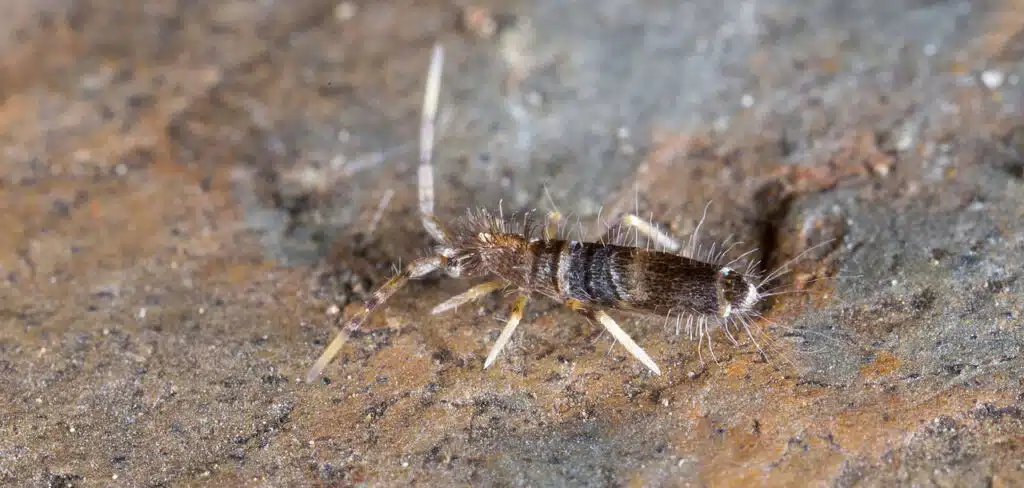
Springtails can also be found on the couch, especially in homes with high humidity.
These bugs are normally brown but they can also be white or black. They enter homes by crawling through wall openings or by following openings around piping.
Springtails can live their entire lives indoors as long as they have sufficient food such as fungi and decaying organic matter.
Springtails don’t bite and they don’t cause any damage to the couch. Catching them by hand might be difficult since these bugs can jump a few times their body size.
Springtails can be prevented by lowering humidity levels inside of the house to control fungi formation.
Refraining from overwatering the soil around the house is also recommended to lower or eliminate springtail populations.
14. Cockroaches
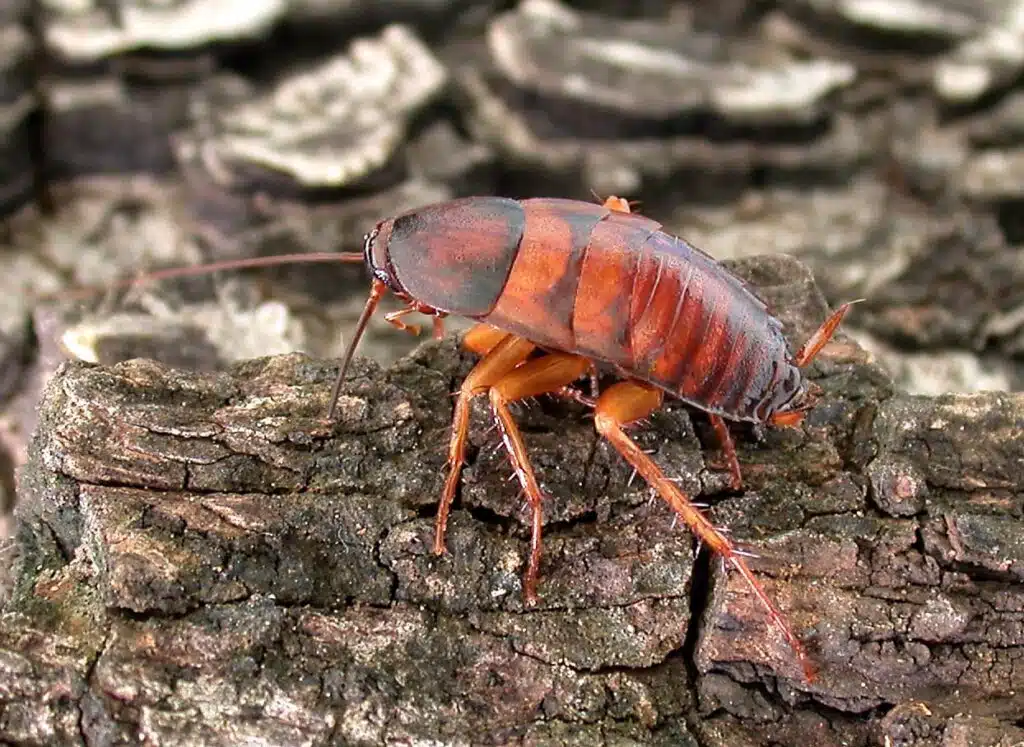
Cockroaches are some of the most problematic bugs you can find on the couch. These bugs come in different colors (typically brown) with an average size of about 1 inch.
They infest homes where they are seen as one of the major pests to worry about. They live in homes for warmth, humidity, and food.
Decaying food and fresh food of almost any type are eaten by roaches. As scavengers, cockroaches can also feed on feces and even on carrion.
Cockroaches on the couch indicate a possible roach infestation.
Since these creatures tend to be nocturnal you might only encounter them at night as they prefer to hide during the day.
Cockroaches might be sitting on the couch if there is leftover food or drink spills for them to feed on.
Food in the immediate area also attracts cockroaches who tend to move from one room to another if they can find food.
Getting rid of cockroaches involves destroying their nests. You need to find where the rest of the cockroaches are and then kill them with anti-roach solutions or by calling a pest controller.
Cockroaches tend to stay away from dry clean places that smell good. Cleaning the house properly is what follows.
However, cockroaches may still find their way even to the cleanest home if there’s food or organic material for them to feed on. Refraining from leaving food out in the open and sealing all possible entry points is mandatory when it comes to keeping common cockroaches such as the American cockroach out.
15. Silverfish
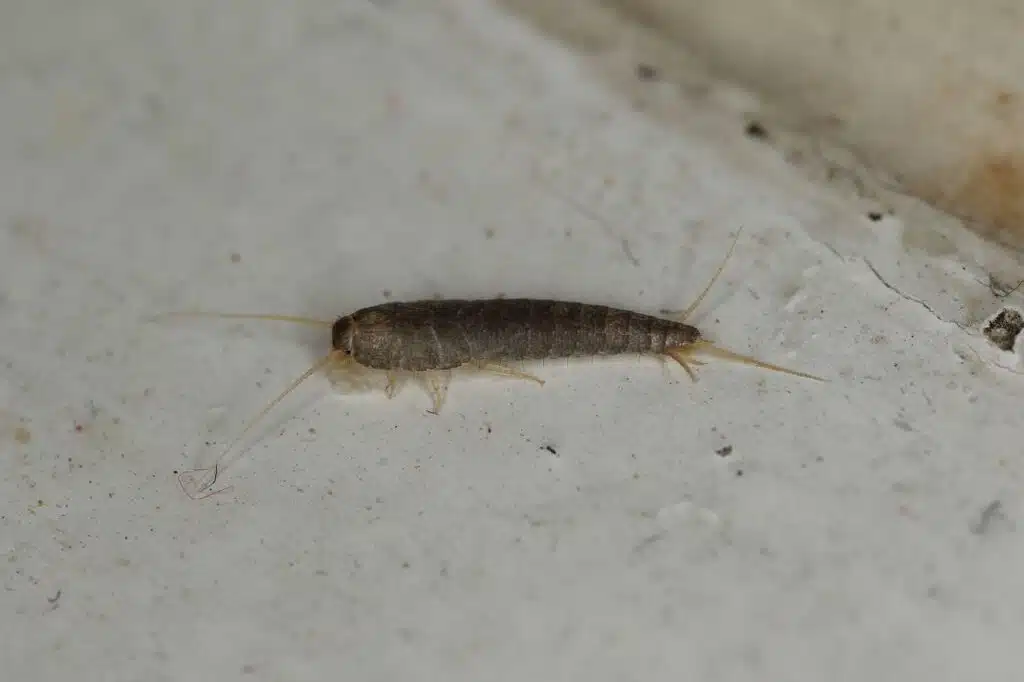
These silver bugs are also common around the house. Smaller than the average cockroach, silverfish make it indoors looking for food or by accident when carried with potted plants.
Bugs of this genus eat all types of vegetable material outdoors. Their diet is considerably different when indoors.
Apart from eating typical food, silverfish tend to eat almost anything they can find indoors.
This includes paper and cardboard alongside soap and other unlikely foods.
Silverfish tend to hide in dark moist places such as in basements or the bathroom. You can slowly eliminate them by placing sticky traps in these areas.
16. Earwigs
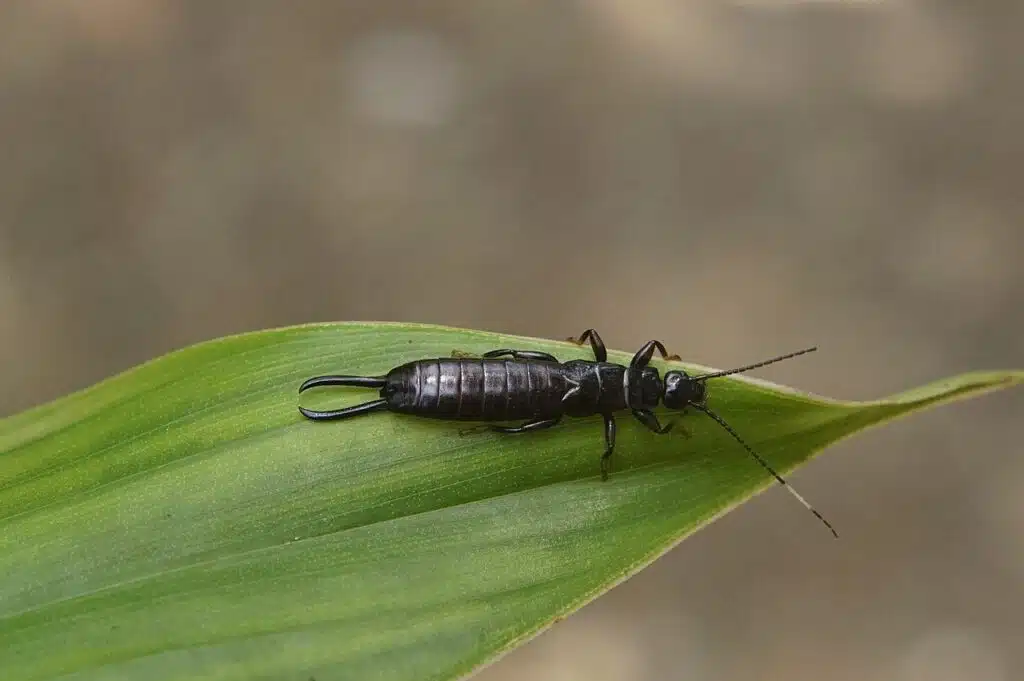
Earwigs are brown insects that grow to a maximum size of 15mm.
These insects are known for their long pincers which they rarely use against people.
Earwigs can get on the couch by various means, mainly carried on clothes. They can also get inside the house from the garden.
These brown bugs have a diverse diet and they often eat other insects, especially when smaller. This is why you should look for small spiders or other small insects to remove or vacuum them whenever you find earwigs indoors.
17. Booklice
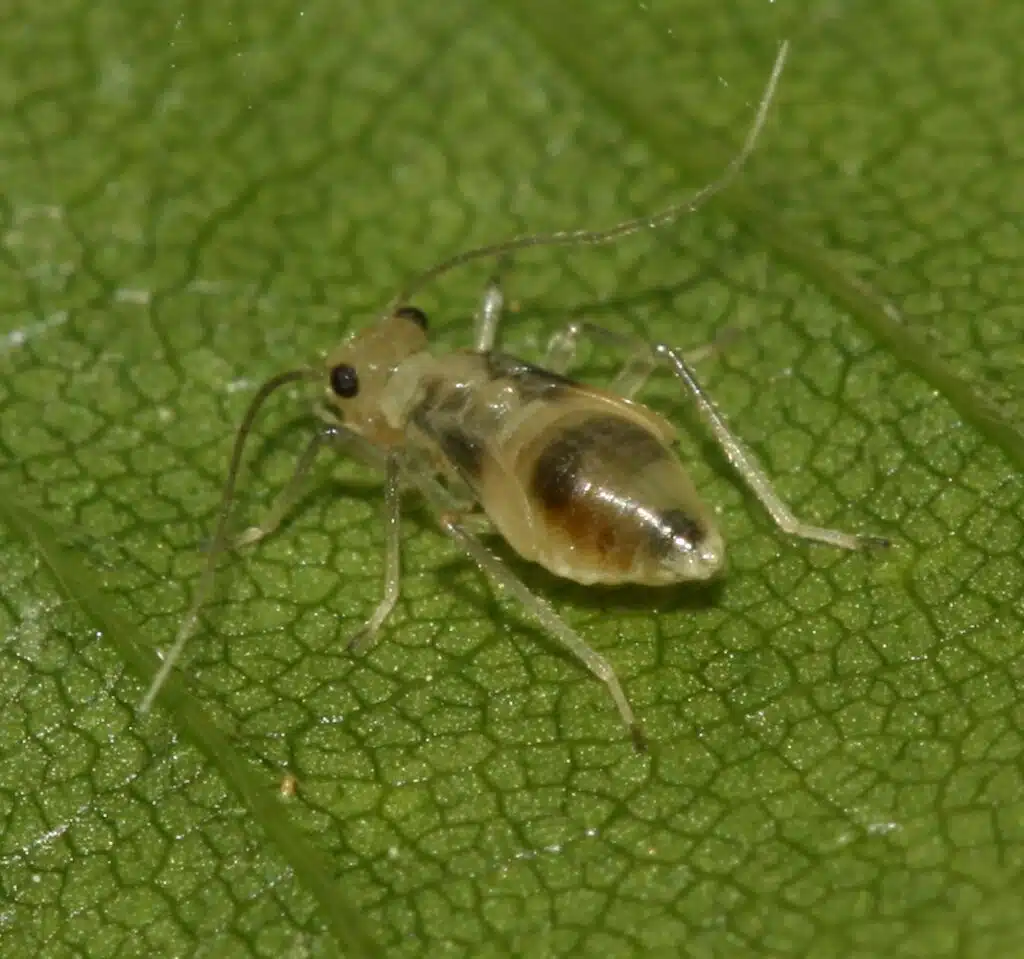
Fungi attract booklice formation in the house and even on the couch. A couch placed in a high humidity room where fungi start to grow is a couch that also attracts small bugs such as booklice.
These bugs eat all types of food apart from fungi. They also eat the glue that holds the pages of a book together.
Booklice also eat small amounts of insect leftovers and various types of grains in the pantry.
Since fungi are the main food for booklice it’s best to reduce air humidity to stop fungi formation first when you try to eliminate them.
Killing fungi on walls and furniture is also recommended.
18. Termites
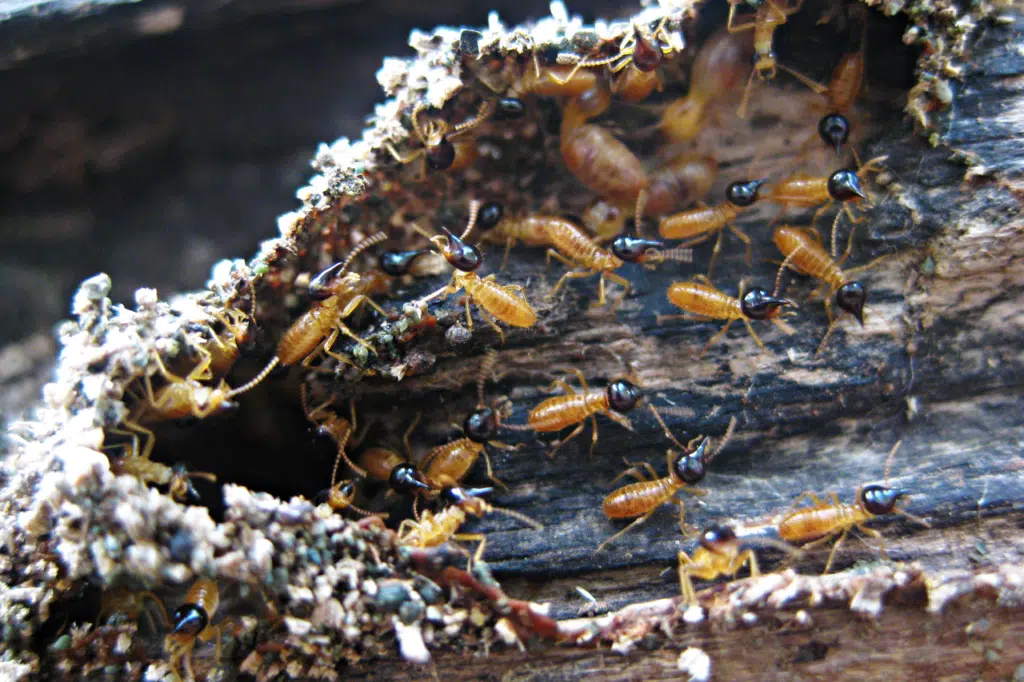
Termites are rarely seen on couches but they may be found around a house they infest.
These small bugs have a detrimental role on wood in the house. Damages to structural wood are what make termites so dangerous when seen indoors.
Termites have different colors and sizes. They even vary in appearance based on their worker class.
You can find termites in homes with damp wood or with damaged wood.
High humidity and water leaks you might not even know about might favor termite formation.
Your home can be affected by termites almost in all US states except Alaska. Higher odds of seeing termites indoors are seen in the South due to warmer weather.
19. Scorpions
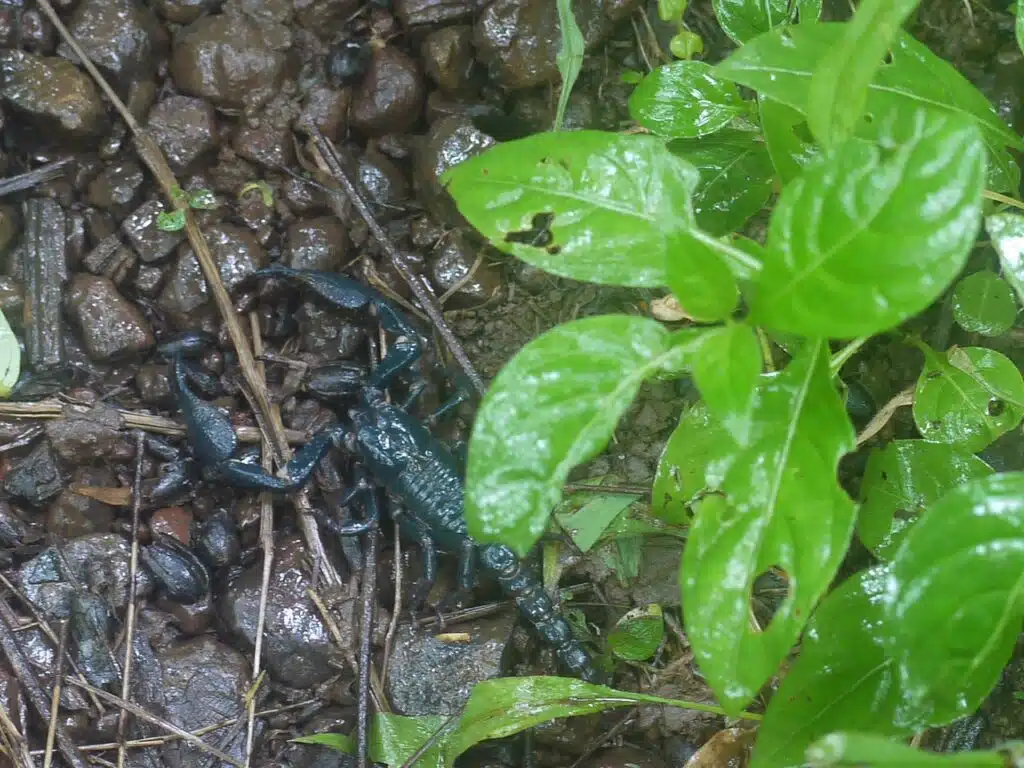
Scorpions can sometimes accidentally make it indoors. These venomous creatures can have a very painful sting.
You need to get rid of scorpions as soon as you see them on the couch. Using a large glass jar can help trap them inside.
Certain types of insecticides and even some types of bug sprays can kill the scorpion.
If you live in an area where scorpions are seen in their natural habitat it may also be wise to invest in a scorpion trap.
20. Centipedes
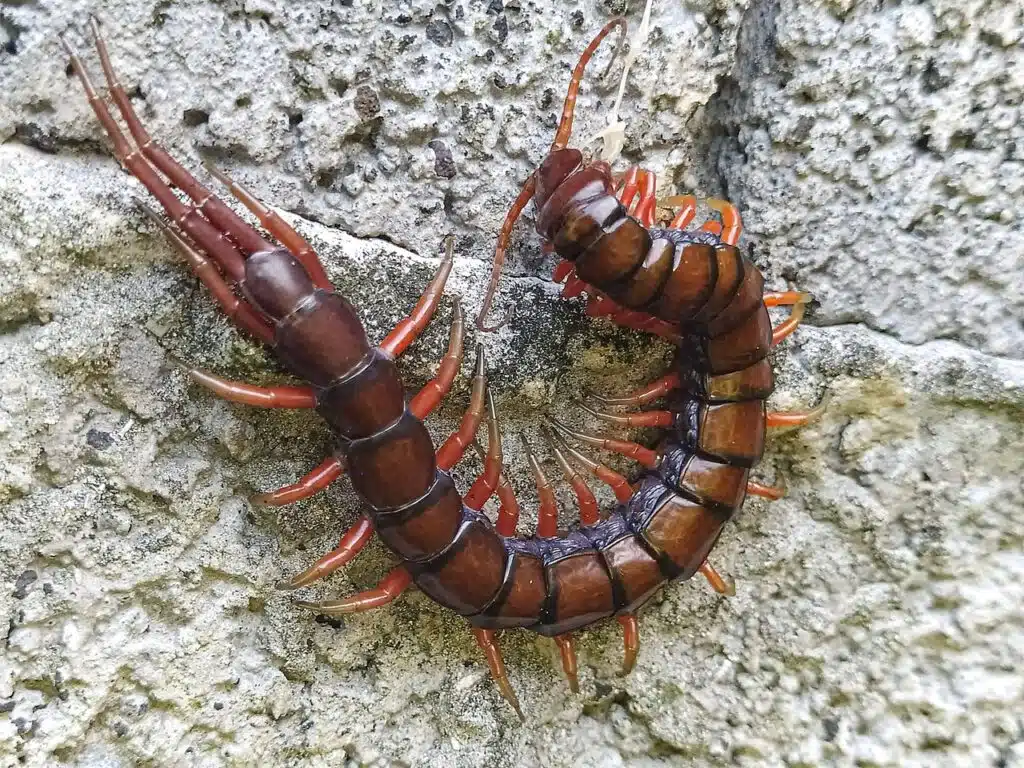
Centipedes are recognized by their numerous legs seen all around the body.
While not the largest types of bugs that you can find on the couch, centipedes have a clear predatory mission to be there or in the area of the couch.
Centipedes eat roaches and bed bugs, both a common sight on couches and around many homes.
Seeing centipedes eat other bugs and insects is also common.
Using sticky traps around the house can help you get rid of centipedes for good.
Clearing centipedes from the house is important. These creatures aren’t known for biting but centipedes’ bites aren’t unheard of.
21. Millipedes
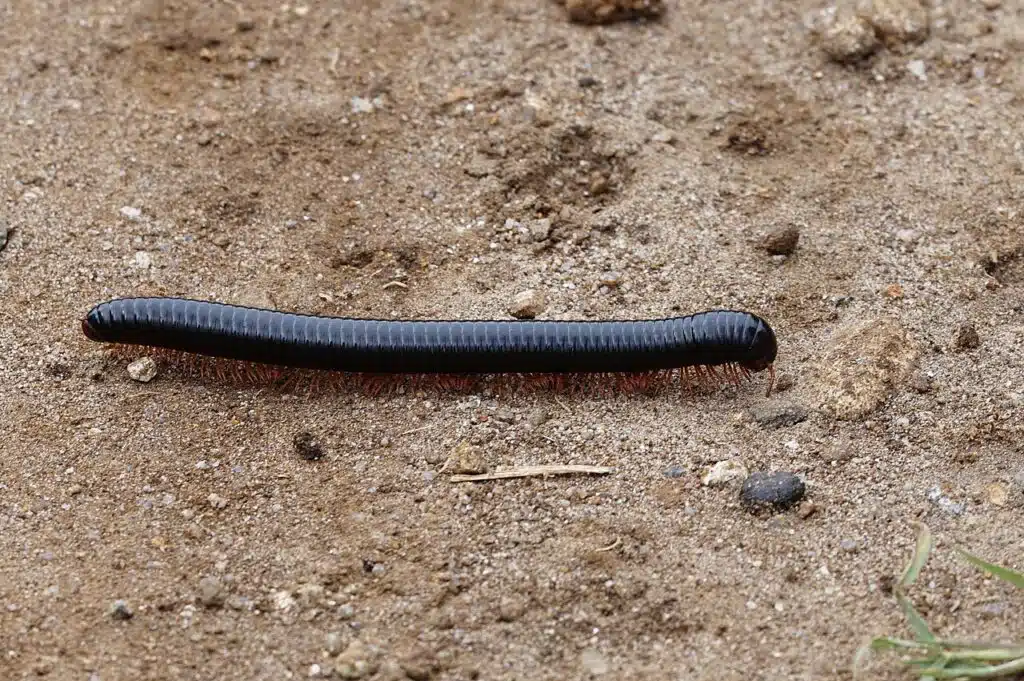
Millipedes are often mistaken for earthworms. As centipedes, millipedes also have numerous legs and they move by crawling.
Seen in different colors, millipedes are rarely seen indoors but they can be a common sight in old un-renovated homes.
Millipedes may be looking for decaying food, decaying plants, and even decaying parts of the wood which might explain their presence on furniture and couches.
How to Get Rid of Bugs on Your Couch
You can get rid of bugs on your couch by using different methods according to the species you identify. Most bugs can be vacuumed but their eggs might need further action with chemical treatment.
Use a vacuum cleaner
Vacuuming the bugs on the couch is the easiest method of getting rid of them. You need a powerful vacuum cleaner that can get into all of the corners of the couch so that you can clear all bugs and their eggs.
Spiders are among the species that might also be found under the couch. It’s recommended to vacuum all sides of the couch including the space under the couch where spiders and other bugs can lay eggs.
Consider double-sided tape to catch bugs
Some smaller bugs such as lice might be eliminated quickly with double-sided tape. You can use this type of tape all around the couch to further clear out all bug eggs on the couch.
Double-sided tape is also a good alternative to using insecticide on certain species that don’t invade the couch in high numbers such as millipedes.
Apply insecticide
All types of serious invasions need to be dealt with by using chemical treatment. The insecticide is often used against roaches and other pest bugs.
You need to apply chemical treatments to the couch and the area around the couch when dealing with a nest of bugs or a serious bug invasion that cannot be thoroughly eliminated by vacuuming alone.
How to Prevent Bugs Hiding on Your Couch
You can prevent bugs hiding on your couch by thoroughly cleaning your home and by sealing all entry points for these small invaders. Some bugs might not be prevented by cleaning your home as they are also found in the cleanest houses.
Clean your home regularly
Sweeping, vacuuming, dusting, and ensuring proper ventilation are common maintenance tasks for your home that keep many bugs away. Checking air quality and lowering humidity can help with many of these bugs.
Dust mites are among the tiny bugs that only arise in homes with high humidity as they need fungi for food. Silverfish and even some species of roaches love high humidity and they seek such places to nest.
Store food in sealed containers
Food for the bugs on your couch includes typical leftover food such as bread crumbs, crackers, dried fruits, and even rotting meat. You need to clean out the couch to avoid bugs being attracted to it.
Open food and leftover food attract a wide range of bugs. You may eliminate the risk of attracting a good range of bugs on the couch simply by cleaning it from food crumbs and dealing with drink spills immediately.
Close all wall gaps
Many bugs that end up on the couch fly in through open windows or make their way through wall cracks. This is the case with carpet beetles which are known to be attracted to light.
Carpet beetles and many other bugs can be kept away from the couch and the house whenever you ensure all tiny gaps in walls or around windows are properly sealed.
You may even need to check ventilation systems as many bugs come in with the air draft.
Check clothes, luggage, and camping gear
Chiggers, clover mites, and even crickets are all bugs that may accidentally end up on your couch when you bring them indoors with bags, luggage, or on your clothes.
You need to check your clothes and personal belongings after every trip out in nature as you may bring in unwanted guests indoors.
Fleas are some of the most problematic bugs that you can accidentally bring indoors after camping or hiking. These bugs might also attach themselves to your pets which also need to be checked.
Summary
The couch might be the first place you sit indoors after camping which means you may bring in unwanted bugs with you indoors.
Food traces from a movie night might also attract all types of other bugs to the couch. Light sources around the couch are further known to attract species such as bed bugs, especially if these bugs can easily fly indoors through open windows.
A clean couch without any leftover food is the first step toward a bug-free zone. Checking the house for possible bug invasions is also recommended as many bugs on the couch are also found elsewhere around the house.